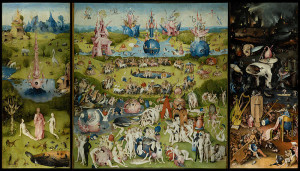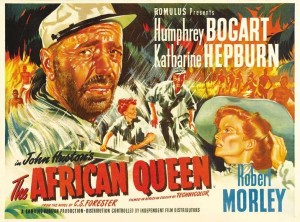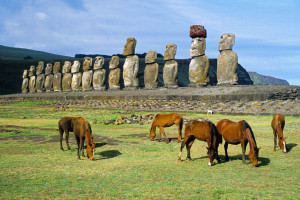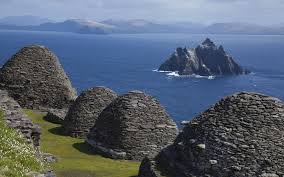cultural travel

Yu Sheng, the salad that Malaysian Chinese toss to ensure prosperity for the coming year. Photo by Jade Chan.
Chinese New Year (also known as Spring Festival), starts on February 8 this year and continues for 15 days.
It’s the most important festival time of the year in China — when millions of Chinese travel to their home villages and cities to be with family or friends for holiday reunions.
This is the Year of the Fire Monkey: a combination of fire — one of the five primal Chinese elements that include wood, earth, fire, metal, and water — and monkey, which is one of the 12 rotating Chinese Zodiac signs.
Chinese New Year is now celebrated by parades featuring dragon and lion dances and fireworks, family gatherings and feasts, and, on the 15th and final day, a Lantern Festival featuring illuminated red lanterns.
According to legend, Chinese New… Continue reading
Part II of a two-part series. Our story so far:
In my previous post, I confessed to spending three months in Europe shortly after finishing college determined to view every painting on the Continent by the 15th-century Flemish artist Hieronymus Bosch.
My quest took me the length and breadth of Western Europe on a tight budget, in rumpled clothing, and with an almost fanatical zeal to complete my Bosch life list. In the process, I befuddled just about everyone I knew. I was no trained art historian, just an amateur Bosch aficionado equipped with a rail pass and an oddly compelling travel obsession.
You can catch up by clicking here or just pick up the story at the point where I left off: A guard in Spain’s Prado Museum taking an… Continue reading
Way back in 1971, shortly after graduating from college, I developed an obsession for the paintings of the 15th-century Flemish master Hieronymus Bosch, whose phantasmagorical — sometimes grotesque — artworks appealed to my psychedelic sensibilities of that era.
I spent days in libraries hand-copying notes from dusty tomes about the artist, sought out all of his works in American museums, and eventually embarked on a three-month pilgrimage to Europe determined to set eyes on every Bosch painting on the Continent.
On my target list were 31 museums and churches containing 58 works of art, scattered across a dozen countries and 26 cities and towns from Copenhagen to Vienna to Lisbon.
My resources were limited: a Eurailpass, a copy of Europe on $5 a Day when it was still called that, and a budget to match.
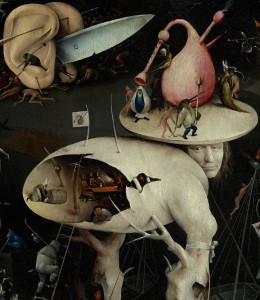
Detail… Continue reading
As a baby boomer, most of my pop cultural touchstones date back to the 1950s through the 1970s.
Bob Dylan will always speak more to me than Jay Z; the Kardashians are only names to me. What is it they do, exactly? I have no idea.
My all-time favorite actors and actresses are long since deceased; some of my favorite movies were filmed in black and white. But many of them — along with popular songs, books, and TV shows — have played crucial roles in developing my love of travel, and continue to do so to this day.
The first movie I can remember seeing on the big screen — around 1952 — was The African Queen with Humphrey Bogart and Katharine Hepburn; it was playing at my local theater as part of a double feature with another classic, High Noon.
The African Queen… Continue reading
First in an occasional series of profiles of ardent baby boomer travelers:
I hadn’t seen Carol Bruen — who I knew as Carol Heller before she was married — since the end of seventh grade.
Carol and I were grade school classmates in Greencastle, Indiana, before she moved to Alaska. We reconnected recently via this blog. (One of the best things about blogging is hearing from old friends, classmates, and colleagues — so if some of you are still lingering out there, don’t forget to write!)
In our correspondence, we discovered our lives had taken many similar turns — we both did stints working in the U.S. Senate in Washington during the 1960s; we both lived in the same neighborhood in San Francisco in the 1970s; we both had come to know Alaska quite well; and,… Continue reading
Watching the new Star Wars movie — The Force Awakens — the other night, I was startled, and pleased, to see one of my favorite places in the world as the setting for the dramatic last scene.
(I won’t spoil the ending for those who haven’t see the film, but I can recommend the movie to any baby boomers who liked the initial trilogy, called Episodes IV to VI. Several of the old stars have returned, and the plot, characters, and general feel are much like a combination of the first three in the series.)
The place setting for the last scene is the spectacularly beautiful rocky island Skellig Michael (also known as Great Skellig), which lies about seven miles off the coast of southwest Ireland.
I visited there about 12 years ago on a… Continue reading
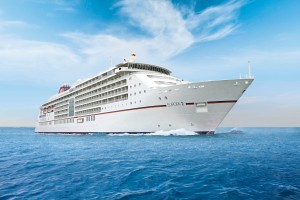
Luxury cruise travel — such as on Hapag-Lloyd’s Europa 2 — is one favorite of senior travelers. Photo by Clark Norton.
In my last post, I recommended a piece by Anita Mendiratta of the CNN Task Force contending that the world’s seniors (those aged 60 and up) are “global tourism’s silver lining.”
Based on world tourism and economic statistics, Mendiratta notes that senior travelers have more disposable income than other age groups, have more flexibility as to when to travel, and tend to stay longer on the trips they make.
But I thought her own observations about how seniors bring a special sense of excitement and awe to travel was especially insightful.
Baby boomers (now in their 50s and 60s) have a lifetime of experience and knowledge to bring to their travels, and I think this results in greater appreciation for — and excitement about — the places… Continue reading
Sixth in a Series:

A Chinese symbol inside the Red Pagoda — if you rub it, it’s said to bring good fortune. Photo by Clark Norton.
Like all rivers, China’s Yangtze is constantly changing, though in this case humans have produced the most profound recent changes rather than nature.
The huge Three Gorges Dam project has resulted in the water level rising more than 100 to 300 feet, depending on the location and the season, along a particularly scenic stretch of the river known as the Three Gorges. The gorges, while not as dramatically steep as the pre-dam versions, are still scenic and still well worth seeing, as my wife, Catharine, and I discovered on a recent Yangtze cruise with Victoria Cruises.
The rising waters have even opened up new scenery to explore: one excursion from our ship, the Victoria Katarina, took us on a ferry ride down the… Continue reading
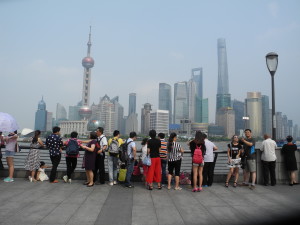
Selfie, anyone? Walkway along the Huangpu River, with Pudong in background. Photo by Catharine Norton.
Second in a Series:
I suppose the title “City of the Past, Present and Future” could apply to many cities — but few, if any, as much as Shanghai, China.
Within the course of a few blocks — or just across the street in some cases — you can go from narrow alleyways lined with shacks that have no kitchens or indoor plumbing, to magnificent old temple and garden complexes, to stately colonial-era houses sequestered behind shady sycamore-lined streets, to a pedestrian walkway lined with super-modern clothing and electronics stores that light up like Times Square at night, to a waterfront lined with more colonial-era buildings and a river walk that has to be the selfie-taking capital of the world.
And across the river (providing a background for the selfies) lies the region… Continue reading
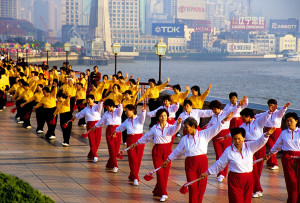
Morning exercise teams on Shanghai’s Bund, along the Huangpu River waterfront. Photo by Dennis Cox/WorldViews
First in a Series:
Having just returned from a 12-day trip to China, in which my wife, Catharine, and I traveled independently for much of the time, I wanted to pass along some tips, cautionary information, and interesting factoids for anyone planning to visit that fascinating country in the reasonably near future — especially if you’re planning to do some independent travel.
(China is changing so fast that I can’t guarantee some things won’t be completely different a year from now.)
Our goal for the trip was to take a five-day, four-night Yangtze River cruise via Victoria Cruises, the only American-owned cruise line on the Yangtze — I’ll have an account of that in a later post. But first we wanted to stay several days in Shanghai — which I’ll be detailing later… Continue reading


